Evaluating AMD's TrueAudio and Mantle Technologies with Thief
by Ryan Smith on March 18, 2014 1:15 AM ESTTrueAudio
Getting to what I feel is the more exciting aspect of today’s patch and driver release, we have our first look at AMD’s TrueAudio technology. To preface this with an appropriate degree of expectation management, nothing being presented with TrueAudio today is going to qualify as being all that groundbreaking. TrueAudio is an audio processing technology designed to offload advanced audio processing that could be done on the CPU, and in years past would have been handled on dedicated sound cards. To that end unlike the world of graphics where we’re usually talking about technologies and rendering techniques that are breaking new ground, TrueAudio is closer to a new way of retreading it.
The upside however is that TrueAudio is the first serious attempt in almost a decade to improve the quality and quantity of audio spatialization and effects on the PC. With Windows Vista having moved audio processing into software, and multi-platform titles (i.e. console ports) becoming increasingly common, PC audio has by most metrics regressed since the middle of the last decade. This has led to game audio ranging anywhere from good to terrible, depending on the capabilities of the audio stack used in a game. The best of games will offer a solid spatialization algorithm – and spend the CPU time to do it – while the worst of games will usually be optimized for a 2 and 5.1 speaker setups, mixing down from that for other setups while using minimal environmental processing and effects.
This is ultimately all work that could be done in the CPU, but good audio effects aren’t always cheap, and game developers as a whole have been apprehensive about dedicating significant CPU time to audio when they could be using it to improve graphics or lower the system requirements. In the meantime the launch of the current generation of consoles presents an interesting opportunity as those devices are equipped with dedicated audio DSPs – technology similar to TrueAudio in the case of the Playstation 4 – so offering DSPs in the PC offers the chance to piggyback on those developments. The end result is that for headphones gamers (such as myself), the combination of the new console generation and AMD’s push for better audio processing with TrueAudio offers the hope for an improvement in PC audio processing, and some neat hardware to back it up.
For our look at TrueAudio we’ll kick things off once again with Thief. As the first game to implement TrueAudio support it gives us our first chance to evaluate TrueAudio within a game, both from a performance standpoint and a quality/benefits standpoint.
With today’s patch Thief is gaining support for Convolution Reverb, which can be done in either software or the TrueAudio hardware. Convolution reverb is the only effect being offloaded – all other processing stays on the CPU – so what Thief will be showing off is only one possible use for the TrueAudio hardware. Unfortunately software convolution reverb processing doesn’t seem to be working at this time (see our sample below), so we can really only evaluate it running on TrueAudio versus the effect being disabled entirely. Accordingly, we can’t really measure the CPU performance costs of convolution reverb either, and our testing has found no performance hit from enabling the TrueAudio implementation.
Convolution reverb itself is a relatively simple effect that can quickly ramp up in processing requirements as the number of reflections increases. In convolution reverb a real world audio sample of an environment (the impulse response) is used to model how sound should reverberate through an artificial environment, essentially allowing games to mimic real world reverb by using the impulse response as a template. The quality of the effect in turn will depend on both the quality of the initial sample and how developers choose to use it, so unlike a modeled approach (e.g. real time ray casting) the accuracy of the effect is only as good as the inputs.
With that in mind, compared to graphics it’s much more difficult to objectively compare audio technologies. Convolution reverb’s simple nature naturally separates listeners into groups that either like the effect or don’t, but in either case it’s hard to argue that there’s a definitive answer. Not unlike something like G-Sync, all we can really do is offer some samples and discuss the experience, since we can’t fall back on hard numbers.
Convolution Reverb: Off, Software (broken), and TrueAudio
In our above sample we’re banging a knife on a brick wall, a simple but effective way to test with the effect enabled and disabled with a high degree of accuracy and repeatable. And having played through the first level of Thief with convolution reverb both on and off, I unfortunately find myself distinctly in the group of people who would find it unnatural. Throughout that section of the game, with reverb enabled many sounds come off as sounding out of place.
Now what is a Victorian Era alleyway supposed to sound like? I honestly have no idea, hence the subjective nature of it. But throughout Thief the effect feels overdone; every sound source affected by reverb seems to have too much of the effect, from NPCs talking to weapons striking. Without convolution reverb there’s a very noticeable lack of reverb altogether, but with it turned on I can’t shake the impression that there’s now too much reverb.
Ultimately I’m not sure if there really is too much reverb in Thief, or if it’s in my head (figuratively speaking). Have I just grown too used to games that are light on reverb, and now that I’m playing a game with convolution reverb it’s merely not what I’m used to? Or is it really overdone, if only to show off the technology and to make sure it’s noticed?
As a graphics and GPU guy, it reminds me a lot about the debate about film frame rates. I for one find 24fps material jerky, blurry, and blatantly unnatural. And yet most people around me would say that it’s high frame rate material that’s unnatural, as they have become accustomed to 24fps films and anything above that breaks their perception since it’s not what they’ve come to expect. I’m left to wonder if I’m in a similar situation, except for audio.
In any case, on a purely subjective evaluation, I don’t feel that Thief is a strong showcase for TrueAudio. The question isn’t one of technical merit – audio DSPs aren’t new and have proven their value – but rather whether the game is a good example of what the technology can do and how it’s used. And since Thief only uses it for convolution reverb, and I feel uses that reverb too heavily, I would most likely play with the effect turned off, thereby bypassing the TrueAudio hardware entirely. As just one game out of what will hopefully be many more I won’t base my entire opinion on TrueAudio off of this one game, but at the end of the day it’s not the strongest argument for TrueAudio. Hopefully future games put it to better use, both in terms of using the hardware for more types of processing, and not overdoing the reverb as is occurring here. To draw a historical parallel, for anyone that was around back in 2001 to play the original Unreal Tournament with the EAX patch, Thief’s additional of reverb feels a lot like the unnatural reverb that occurred on several of UT’s maps.
Tuscany
With that in mind though, Thief isn’t the only sample of TrueAudio for today. AMD is also releasing one of their in-house demos today for public consumption, and this is a demo that I feel is a much better example of TrueAudio’s potential.
Set in a simple simulation of a Tuscany villa, the aptly named Tuscany demo is a short but effective demonstration of TrueAudio in action. Built in Unity and using GenAudio’s AstroundSound 3D RTI plugin, the Tuscany demo is a combination TrueAudio and Occulus Rift demo. On the visual side it offers input and output support for Occulus’s 3D headset (though it works with regular setups relatively well), while on the audio side it implements AstroundSound’s 3D audio spatialization algorithms on the TrueAudio hardware. Tuscany uses a number of sound sources, all of which are processed by the TrueAudio hardware to do elevation, distance, and positioning spatialization.
This is recorded directly from our Tuscany walk-through, so if you’re listening on headphones without any processing, this should sound exactly like it did for us
As we alluded to at the start of this section, audio spatialization is nothing new. However relatively few games do a good job of it, and even fewer do a good job of it on headphones. So to have a demo utilizing full spatialization, doing it well, and doing it in hardware is quite refreshing compared to what we see with most games.
But with that in mind, the Tuscany demo doesn’t really lend itself to comparison. It doesn’t work without the TrueAudio hardware and it doesn’t support other types of hardware, so we can’t compare it to remaining hardware solutions such as Creative’s SoundBlaster or Asus’s Xonar parts, or even to post-processing technologies such as Dolby Laboratories Dolby Headphone technology. That said, to get back to subjective opinions, I feel like AstroundSound 3D implementation in Tuscany is similarly accurate and realistic as (if not better than) any Asus or Creative solution I’ve tried in the past. Reverb aside, as a gamer I’d first like to see better spatialization in games, and this I feel is an example of where it’s done right both for quality and for making use of the underlying hardware.
Final Thoughts
Wrapping things up, even with the launch of Thief I’m not sure much has changed for TrueAudio at the moment. Subjectively speaking, Thief’s convolution reverb effect just isn’t that impressive due to how overdone it feels, so while it shows us a bit of what the TrueAudio hardware is capable of it’s nowhere near being the killer app for the technology. On the other hand the Tuscany demo, though just a simple spatialization demo, is very impressive for how accurate and realistic it sounds. The catch is that it’s just a demo.
As such the ultimate value of TrueAudio remains to be seen. Even if AMD can get game developers and middleware developers to support TrueAudio, they need to be putting it to good use to make it worth using, and more importantly valuable enough to justify purchasing an AMD video card over an NVIDIA video card. This is a problem I feel NVIDIA has yet to solve with PhysX even after all of these years – it’s still rarely used, and doesn’t seem to influence many gamers – and while it’s far too early to declare TrueAudio’s fate I can certainly see it ending up in a similar rut. Or widely adopted, or not adopted at all as the case may be. But for the time we have finally seen that the hardware is capable of delivering on its premise and its promise, so long as there are developers out there willing and able to put it to good use.


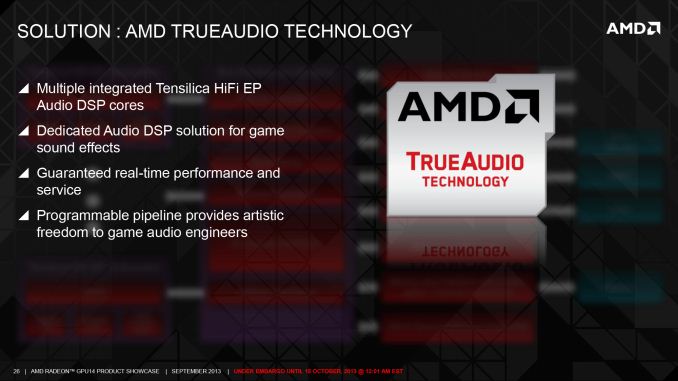
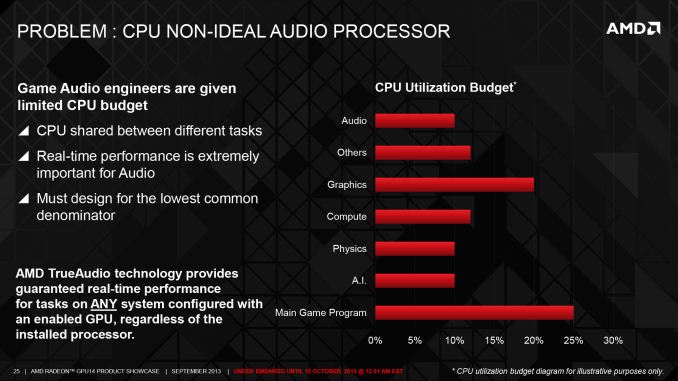
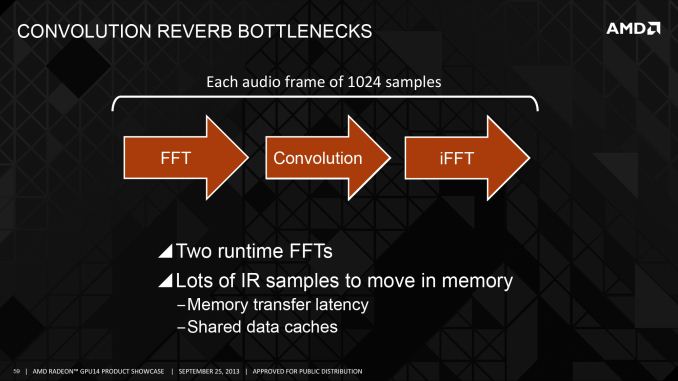
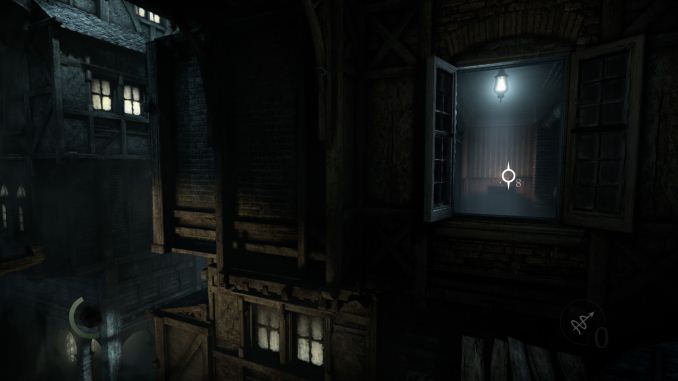
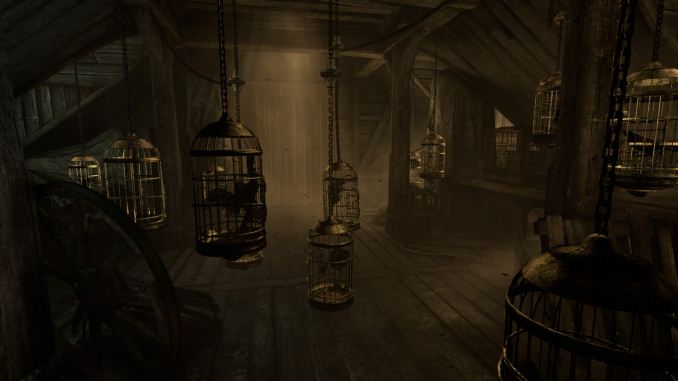
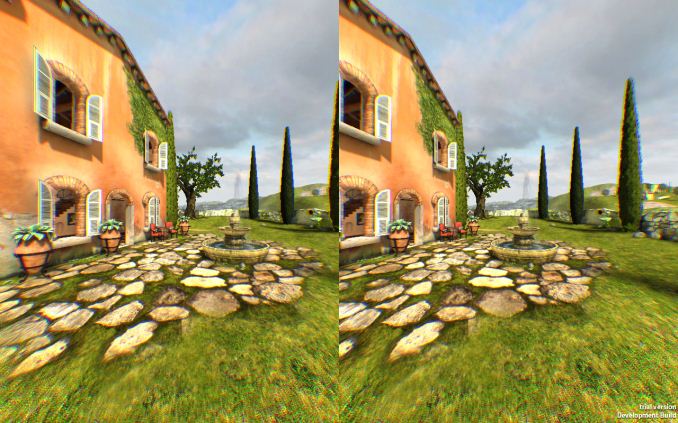
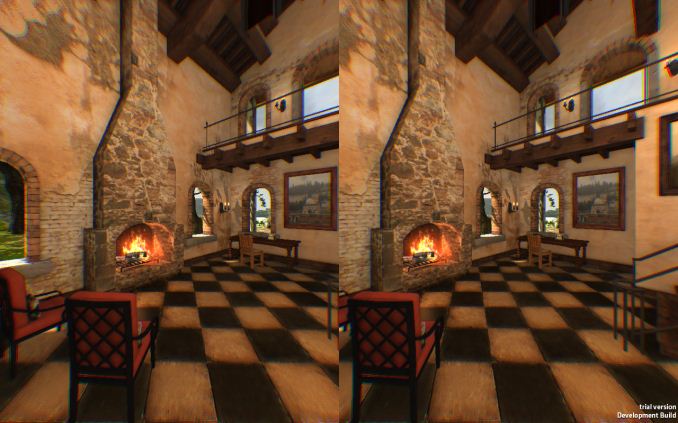








75 Comments
View All Comments
tynopik - Tuesday, March 18, 2014 - link
joying the fray -> joiningbut more on that latter -> later
also lots of places could have used some more commas:
launch title for Mantle Thief -> Mantle, Thief
along with Thief AMD -> Thief, AMD
unlike Battlefield 4 Thief -> Battlefield 4, Thief
Wwhat - Wednesday, April 2, 2014 - link
Sites should make separate closed comment section for such help tynopik, and then when they spot a reliable person assisting like you, give them access to it.That way they have free proofreading and improve their copy, to everybody's benefit.
Askilbrei - Tuesday, March 18, 2014 - link
I would be interested in what this would do for a low budget AMD cpu paired with a medium budget GPU.LarsBars - Tuesday, March 18, 2014 - link
+1It makes sense that AMD would use all of these "offload from the CPU" tricks when its CPUs are currently toward the bottom end of the pack.
TheElMoIsEviL - Thursday, March 20, 2014 - link
No, it really wouldn't make sense since AMD does have the extra CPU cores, in DX games, that generally remain idle. AMD do have the extra CPU resources available for audio.Problem is Direct3D and how much it sucks donkey nuts.
bsim500 - Tuesday, March 18, 2014 - link
Out of all the games that could potentially benefit from this, Thi4f is absolutely top of the list but has pretty much already flopped for a variety of reasons, ironically, one of which is a pretty crappy sound engine that still can't match a 1998 Looking Glass Studio game... Despite its epic franchise's history, Thi4f has an awful sound engine. Even the original game managed to more accurately replicate the effect of attenuation over different surfaces, etc. "Thi4f" somehow manages to screw it all up so that solid walls can make no difference in volume / frequency to a sound. It's also bugged in that one conversation 30ft away can jump in volume to match one 2ft away. All surfaces except glass & water now sound the same, etc. It's nothing like the stone vs wood vs tile vs moss vs grass vs metal, etc of the original. They can't even get the default music vs speech balance right with people complaining of not being able to overhear conversations in many sections.TrueAudio is promising, but it won't fix flawed psycho-acoustic programming in the core game which is the #1 key issue of "what sounds real". More audio channels won't make a game sound better unless devs spend a lot more time & money on realistic subtle sounds and learning to position & mix them well rather than just "slap more reverb on more surround sound explosions". 96-192khz sampling rates are pointless for everyone not sucked into audiophile snake-oil, etc.
I don't doubt that TrueAudio may provide some great effects in demo's, but really game devs aren't going to put in a lot of effort to perfect it since audio typically takes a back seat to the "Oooh! Shiny!" GFX obsessed brigade. After all, we're talking about the same devs who churn out games as quickly as possible and release them in a half bugged state and use "Day One Preorder" gamers as glorified beta testers just to save a few bucks on testing...
Many new technologies sadly end up unrealistic because the devs deliberately exaggerate them as a "showcase". With GFX we've had unrealistic bloom, DOF, etc, and with audio, usually they put in too much echo, and have limited ambient sounds for budgetary reasons. Think of real life - you often hear over 200 ambient sounds in the space of an hour. Now think games - you're lucky if you get 20 throughout the game. and the few you get are often overly loud or "crammed" into too small an area. The issue isn't really "GPU offloading", it's the psychology of developers.
bsim500 - Tuesday, March 18, 2014 - link
And just to add - if anyone's in any doubt over the attitude of developers making things "more real at any cost", with Thief 4, they took the 11 light gem visibility levels of the original, and dumbed it down to just 3 levels : "pitch black", "as visible as wearing a fluorescent yellow jacket in broad daylight", and "half-way between them"... It ain't the engine's that need over-hauling, it's the pervasive dumb-it-down-for-the-casual-audience attitude...velis - Tuesday, March 18, 2014 - link
I would disagree with your assessment: game devs already have to put A LOT of effort into sound, but ultimately it all comes off as cheap and useless crap because the audio engines themselves are crap.For a classic reverb sample: firing a gun in open grassland would normally generate little to no reverb while the same gun going off in a super-sized cathedral would generate tons of it.
The difference between a good sound engine and a bad one is that a bad sound engine gives you option to use reverb (and games today do when they think you're in a cathedral) and a good sound engine will take the sound source and run it against scene geometry. That way you'd still get lots of reverb for gun going off inside the cathedral even if you are standing a substantial distance away from the entrance.
The first problem with the above "good" audio engine is that each piece of geometry now also has to have all the sound properties (reflection / absorbtion / scattering / whatever) just like it now only has light properties. The second problem is that you need to push the geometry to audio processing unit as well as to graphics processing unit. What TrueAudio could offer is elimination of this dual transmission since this is supposed to be processed on the gfx card simultaneously.
Panzerknacker - Tuesday, March 18, 2014 - link
Nice article, I understand there is no time yet for a very big article because there are only 2 games supporting Mantle but good to see it making quite a difference in some situations. About TrueAudio, I agree there are very few games with outstanding audio, I hope this will improve. Ryan, have you ever played the original Bioshock? I think that game actually has the best audio of all games I've ever played, from a technical standpoint. I played it with a Creative Audigy 1 soundcard and 5.1 setup and the combination is absolutely astonishing. Maybe with headphones it will sound equally impressive.krumme - Tuesday, March 18, 2014 - link
Damn sad news for sound.Thanx for the subjective impression. Thats what matters. Hopefully in the future ps4 sales can drive devs to use this tech better.
How many play consoles with headphones?